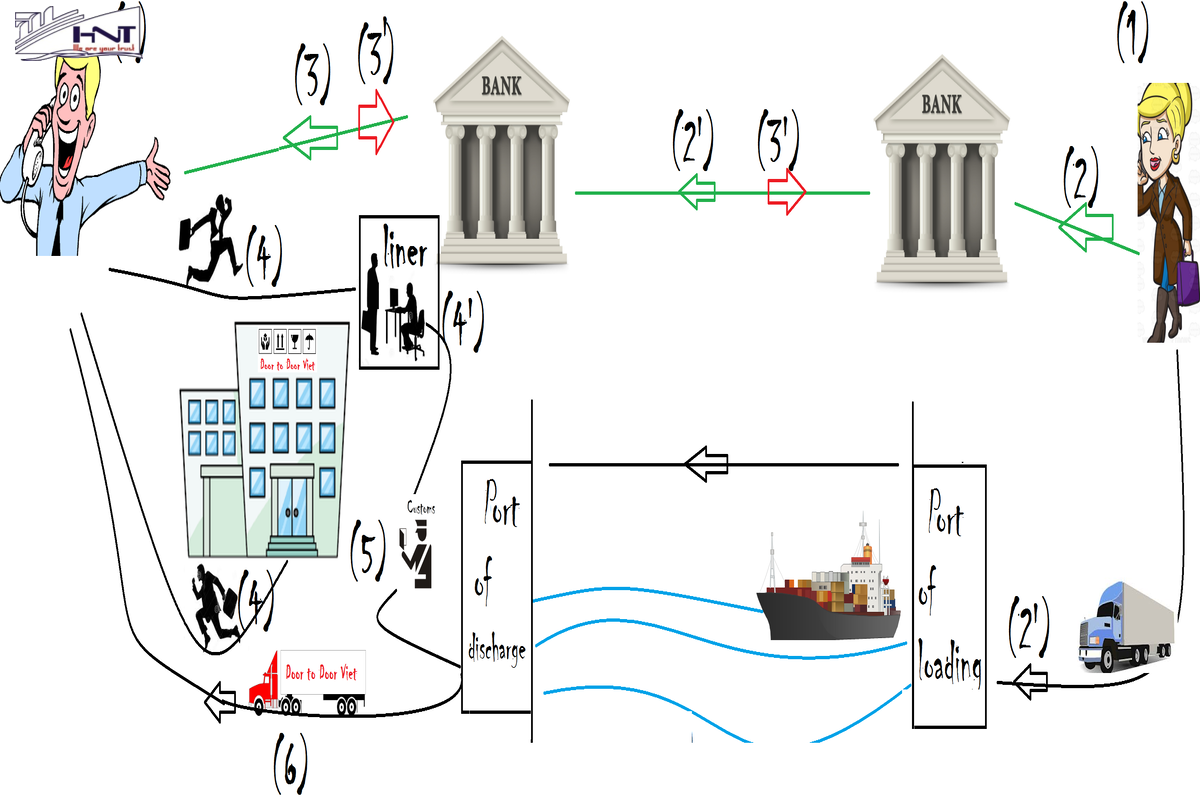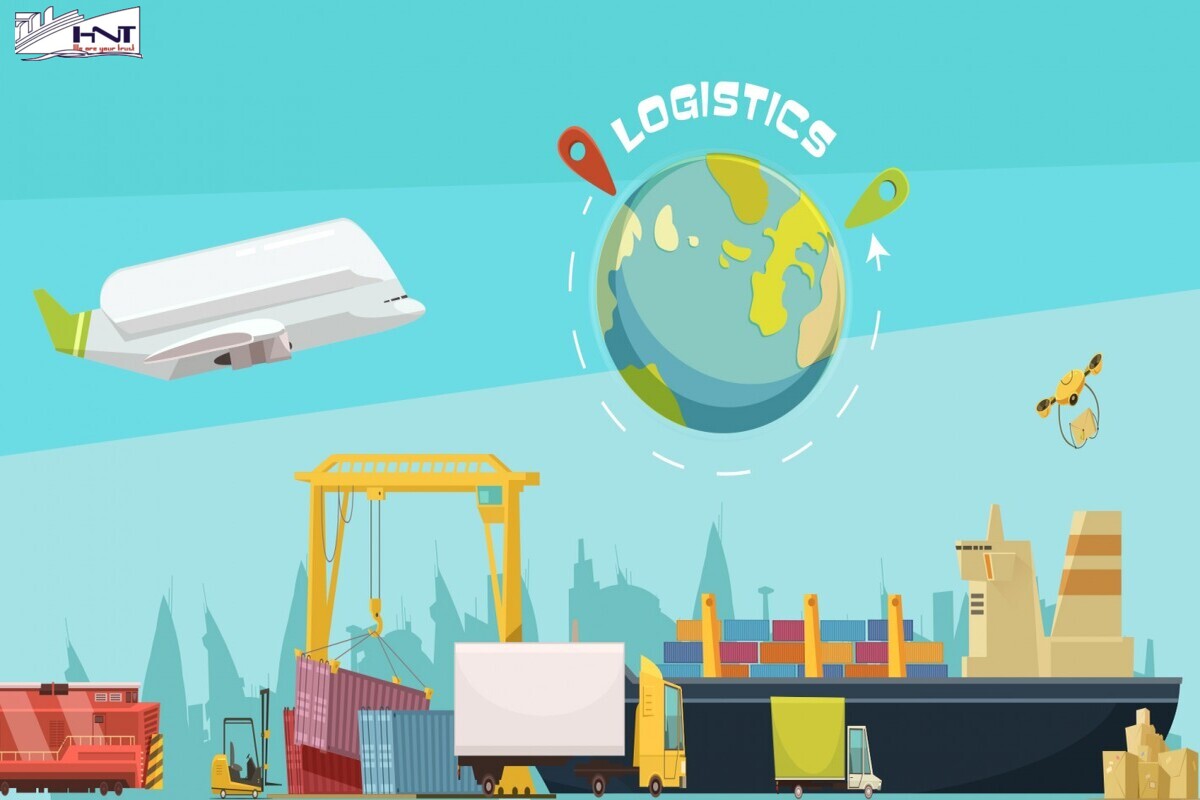Import-export companies play a crucial role in international trade, acting as bridges that connect markets and supply sources globally. These enterprises contribute not only to the economic development of their countries but also enrich the diversity and abundance of products in the market. By sourcing and exploiting goods from various countries, import-export companies provide significant business opportunities and enhance their country's competitive position in the international market. So, what is the workflow of import-export companies? What is CIF in import-export? Let's find out!
Workflow of Import-Export Companies
What is CIF in Import-Export?

Concept of CIF in Import-Export
"What is CIF in import-export?" is a question that many people are interested in. Let's find out together!
CIF in import-export is an abbreviation for Cost, Insurance, and Freight, a common delivery term in international trade. CIF comprises three elements:
- Cost (C): The value of the goods sold.
- Insurance (I): The cost of insuring the goods during transportation.
- Freight (F): The cost of transporting goods from the export port to the import port.
Under CIF terms, the seller is responsible for the goods until they are loaded onto the ship's deck at the port of export. The seller is also responsible for purchasing insurance for the goods and paying the freight charges. Once the goods are loaded onto the ship's deck, the risk and responsibility transfer to the buyer.
Example:
Company A in Vietnam sells 100 tons of rice to Company B in Japan under CIF terms. The price of rice is 500 USD per ton. The insurance cost is 1% of the value of the goods, and the freight cost is 100 USD per ton.
The total CIF value of the shipment is:
- Cost of goods: 100 tons x 500 USD/ton = 50,000 USD
- Insurance: 50,000 USD x 1% = 500 USD
- Freight: 100 tons x 100 USD/ton = 10,000 USD
Total CIF value = 50,000 USD + 500 USD + 10,000 USD = 60,500 USD
Advantages of CIF Terms

The CIF term in import-export has several advantages.
- Convenience for the buyer: The buyer does not need to worry about arranging transportation and insurance.
- Risk reduction for the buyer: The buyer is protected by insurance in case of loss or damage during transportation.
Disadvantages of CIF Terms
- Higher cost: The buyer has to bear the cost of insurance and freight.
- Less flexibility for the buyer: The buyer cannot control the transportation and insurance arrangements.
When are CIF Terms Suitable?
CIF terms are suitable for:
- High-value goods: High risk of loss or damage.
- Goods requiring long-distance transportation: High risk during transportation.
- Buyers without experience in international transportation: Buyers who want to minimize risks and responsibilities.
Other Delivery Terms Similar to CIF

Other Delivery Terms Similar to CIF
Apart from CIF, there are other delivery terms such as:
- FOB (Free On Board): The seller is responsible for the goods until they are loaded onto the ship's deck at the port of export.
- CFR (Cost and Freight): The seller is responsible for the cost of goods and freight charges.
- DDU (Delivered Duty Unpaid): The seller is responsible for all costs and risks until the goods are delivered to the location designated by the buyer.
- DDP (Delivered Duty Paid): The seller is responsible for all costs and risks until the goods are delivered to the location designated by the buyer, including taxes and import duties.
Choosing the Appropriate Delivery Terms
To choose the appropriate delivery terms, consider various factors including:
- Type of goods
- Value of goods
- Transportation Time
- Buyer's experience
- Acceptable risk level
Enterprises should consider these factors when selecting the suitable delivery terms for each transaction.
Workflow of Import-Export Companies
The import-export workflow can be divided into the following steps:
Contract Signing

Signing a contract between import-export companies
Both parties (seller and buyer) agree on terms of sale including price, quantity, quality, delivery time, payment method, etc. The sales contract is a legally binding document that binds both parties.
Apply for Export-Import License (if necessary):
Some types of goods require an export-import license issued by the state agency. Enterprises need to prepare documents according to regulations and submit them to the competent authority to apply for a license.
Preparing Goods
Export goods need to be packaged according to regulations, ensuring quality and safety during transportation. Enterprises need to prepare related documents such as customs declaration, commercial invoice, certificate of origin, etc.
Search and Select Transportation Method
Currently, there are many methods for transporting export goods such as road, sea, and air transportation. Enterprises need to choose the appropriate transportation method based on the type of goods, delivery time, and transportation costs.
Sign Transportation Contract
Enterprises sign a transportation contract with the carrier to transport goods to the location designated by the buyer. The transportation contract stipulates the terms regarding the responsibilities of the parties, transportation charges, delivery time, etc.
Complete Customs Procedures

Completing customs procedures is an important step.
Enterprises need to complete customs procedures for exporting or importing goods, including customs declaration, customs inspection, tax and declaration.
Payment
During import-export, disputes may arise between the parties. Disputes can be resolved through negotiation, mediation, or arbitration.
Dispute Resolution (if any)
During import-export, disputes may arise between the parties. Disputes can be resolved through negotiation, mediation, or arbitration.
Note:
- Import-export procedures may vary depending on the type of goods, transportation method, and importing-exporting country.
- Enterprises need to comply with legal regulations related to import-export.
Conclusion
Above are the details about the workflow of import-export companies. If you are looking for a reputable and reliable shipping company with many years of experience, HNT Logistics HNT is definitely an excellent choice for you.
Main Activities of HNT
- Freight forwarding services include preparing transportation-related documents for customers via sea and road.
- Undertake documents related to import and export such as customs declaration and entrusted import and export.
- DELIVERY/TRANSPORTATION of goods for customers on domestic routes from north to south, from the customer's warehouse to the border gate, and from the warehouse to the seaport.
Contact the hotline 0981.655.880 (Mrs. Thi) for more details about HNT's services!
>>>>> Read more What is container shipping service?




